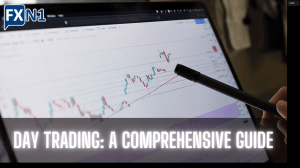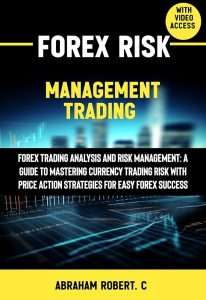A Comprehensive Guide to Forex Trading Signals
Unlock Forex trading success with powerful signals! Navigate the market’s complexities and boost your profitability with expert-driven insights. Learn to read the market and make smarter trades. Get started today!
Forex trading‚ the global exchange of currencies‚ presents both immense opportunities and significant risks. Successful navigation of this dynamic market requires a sophisticated understanding of market trends‚ economic indicators‚ and effective trading strategies. One valuable tool that many traders utilize is Forex trading signals. These signals‚ essentially recommendations on when and how to enter or exit a trade‚ can significantly impact profitability. However‚ understanding how to interpret and utilize these signals effectively is crucial for success. This comprehensive guide will delve into the intricacies of Forex trading signals‚ offering insights into their various types‚ reliable sources‚ and the importance of risk management.
Understanding Forex Trading Signals
Forex trading signals are essentially buy or sell recommendations generated by various sources‚ ranging from automated software to experienced analysts. They aim to predict future price movements‚ enabling traders to capitalize on potential market shifts. These signals typically include the currency pair‚ entry price‚ stop-loss order‚ and take-profit order. A stop-loss order limits potential losses‚ while a take-profit order secures profits when a pre-determined price target is reached. Different signals cater to various trading styles and risk tolerances; Some focus on short-term gains‚ while others concentrate on long-term investments.
Types of Forex Trading Signals
The Forex market offers a diverse range of trading signals catering to different trader profiles. Understanding these variations is critical in selecting the most suitable signal provider and strategy.
- Manual Signals: Generated by experienced forex analysts who analyze charts‚ economic news‚ and other market data to identify potential trading opportunities. These signals often come with detailed explanations and rationale behind the recommendation.
- Automated Signals: Provided by algorithmic trading systems or robots that use sophisticated mathematical models and indicators to generate signals based on pre-programmed parameters. These systems often operate 24/7‚ providing signals around the clock.
- Copy Trading Signals: Allow traders to automatically mirror the trades of experienced and successful forex traders. This method eliminates the need for constant market analysis and allows beginners to learn from seasoned professionals. However‚ it’s essential to select reputable and proven copy trading providers.
- Social Trading Signals: These signals are generated by a community of traders and shared on social media platforms or dedicated trading communities. While this approach can offer diverse perspectives‚ it is vital to critically evaluate the reliability and track record of the signal providers.
Choosing Reliable Sources for Forex Trading Signals
The success of utilizing Forex trading signals hinges heavily on the reliability of the source. Choosing a reputable provider is paramount to mitigate risks and maximize potential profits. Scrutinizing the provider’s track record‚ transparency‚ and customer support is crucial before committing to any service.
Evaluating Signal Providers
Before subscribing to a signal service‚ it’s crucial to perform thorough due diligence. Don’t solely rely on marketing materials; instead‚ investigate the provider’s history‚ performance metrics‚ and client testimonials. Look for providers who offer detailed performance reports‚ showcasing their win rate‚ average trade duration‚ and risk-reward ratios. A transparent provider will openly share this information‚ demonstrating accountability and building trust.
Transparency is key. A reliable provider will clearly outline its pricing structure‚ signal frequency‚ and any associated fees. Beware of providers who make unrealistic promises of guaranteed profits or who lack transparency in their operations. Remember‚ no signal provider can guarantee consistent success in the volatile Forex market.
Implementing Forex Trading Signals Effectively
Even with reliable signals‚ successful trading requires a disciplined approach. Understanding your risk tolerance‚ employing proper risk management techniques‚ and adhering to a well-defined trading plan are essential for consistent profitability. Relying solely on signals without a comprehensive trading strategy is a recipe for potential losses.
Risk Management Strategies
Effective risk management is non-negotiable in Forex trading. Never invest more than you can afford to lose. Employing stop-loss orders to limit potential losses is crucial. Diversifying your portfolio across different currency pairs can help mitigate risks associated with individual market fluctuations. Regularly reviewing your trading performance and adjusting your strategy as needed are essential components of successful risk management.
Furthermore‚ understanding leverage is vital. Leverage amplifies both potential profits and losses. While it can enhance returns‚ it also significantly increases risk. Using leverage responsibly and within your comfort zone is paramount. Many experienced traders recommend starting with lower leverage levels to gain experience and confidence before gradually increasing it.
Advanced Techniques and Considerations
As you gain experience with Forex trading signals‚ you may consider more advanced techniques to enhance your trading strategy. This might include backtesting signals‚ combining signals from multiple sources‚ and incorporating technical analysis into your decision-making process.
Backtesting and Signal Optimization
Backtesting involves evaluating the performance of a trading strategy or signal provider using historical market data. This allows you to assess the potential profitability and risks associated with a particular approach before implementing it with real funds. This process can help optimize your signal selection and improve your overall trading performance. While backtesting provides valuable insights‚ it’s essential to remember that past performance is not necessarily indicative of future results.
Combining Signals for Enhanced Accuracy
Utilizing signals from multiple reputable sources can offer a more holistic and potentially more accurate view of market trends. By comparing and contrasting different signals‚ you can identify patterns and increase your confidence in your trading decisions. This approach requires careful analysis and a strong understanding of various technical indicators and market dynamics. It’s not a guaranteed path to success‚ but it can significantly enhance your decision-making process.
Integrating Technical Analysis
Combining Forex trading signals with technical analysis can provide a more comprehensive approach to trading. Technical analysis involves studying price charts and market indicators to identify trends‚ support and resistance levels‚ and potential trading opportunities. Integrating technical analysis allows you to validate signals‚ identify optimal entry and exit points‚ and refine your risk management strategies. This approach requires a strong understanding of technical indicators such as moving averages‚ RSI‚ and MACD.
The Importance of Continuous Learning
The Forex market is constantly evolving‚ and continuous learning is essential for long-term success. Stay updated on market news‚ economic events‚ and new trading strategies. Attend webinars‚ read industry publications‚ and engage with other traders to expand your knowledge and refine your skills. The Forex market is a challenging yet rewarding environment‚ and continuous learning is the key to navigating its complexities.
- Stay informed about global economic events: Major economic announcements and geopolitical events can significantly impact currency values.
- Follow market trends and news: Keeping abreast of current market trends and news is crucial for making informed trading decisions.
- Network with other traders: Sharing experiences and insights with other traders can provide invaluable learning opportunities.
- Regularly review and adapt your strategy: The Forex market is dynamic; your trading strategy should adapt to changing market conditions.
Forex trading signals can be a powerful tool for enhancing profitability‚ but they are not a guaranteed path to riches. Success requires a combination of selecting reliable signal providers‚ implementing effective risk management strategies‚ and continuously learning and adapting to the ever-changing market dynamics. Remember‚ responsible trading and a well-defined strategy are the cornerstones of long-term success in the exciting and challenging world of Forex trading. Consistent effort‚ disciplined execution‚ and a commitment to continuous learning will ultimately determine your success in this dynamic market. Understanding the inherent risks and managing them effectively is paramount. Never invest more than you can comfortably afford to lose‚ and always approach Forex trading with a long-term perspective. The journey to mastering Forex trading signals is ongoing; embrace the learning process and celebrate your progress along the way.







